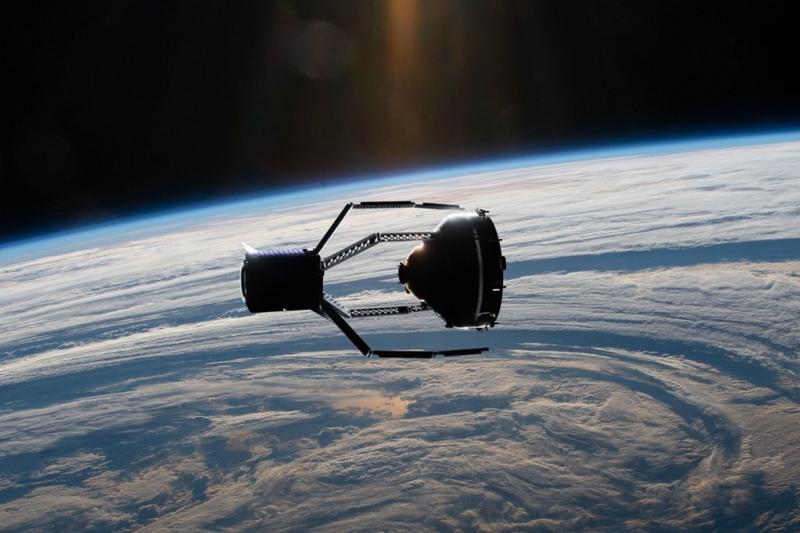 A handout photo made available by the European Space Agency (ESA) shows an illustration of the first active debris removal mission ClearSpace-1 which in 2025 will capture and take down for reentry the upper part of a Vespa (Vega Secondary Payload Adapter) used with Europe's Vega launcher. (PHOTO / AFP)
A handout photo made available by the European Space Agency (ESA) shows an illustration of the first active debris removal mission ClearSpace-1 which in 2025 will capture and take down for reentry the upper part of a Vespa (Vega Secondary Payload Adapter) used with Europe's Vega launcher. (PHOTO / AFP)
TIANJIN - Removing trash in space will now be easier thanks to a China-developed continuum robotic arm.
Inspired by human limbs, most robots are created with discrete links rigidly connected by joints. The continuum robot, in contrast, can move by bending through a series of continuous arcs producing motion akin to tentacles or snakes.
A 12-second video released by the university shows a precise capture by the robot, which snakes its way through a tricky maze without human help and catches a subject no bigger than a ping pong ball
Researchers from Tianjin University have developed such a robotic arm that can be used to chase down and collect debris from satellites and other space technology orbiting high above Earth.
The robotic arm, which resembles the arm of an octopus or the trunk of an elephant, includes a central backbone made up of a superelastic metal alloy of nickel and titanium, which can revert naturally back to its original shape after being bent or deformed by outside forces. It also has a camera and a grasping claw attached to the head.
READ MORE: NASA releases basic principles for moon exploration pact
A 12-second video released by the university shows a precise capture by the robot, which snakes its way through a tricky maze without human help and catches a subject no bigger than a ping pong ball.
Lead researcher Kang Rongjie who is also an associate professor at the university's Center for Advanced Mechanisms and Robotics said the continuum robotic arm in experiments exhibited better flexibility and adaptability to the external environment than conventional robots. The latter requires tactile sensors in operations.
Kang said his team has designed a variable stiffness mechanism, powered by a set of embedded shape memory alloy springs, to enhance the robotic arm's load capacity. When the robot reaches the predetermined operation position, the springs can lock its drive rods and constraint disks together to increase its stiffness by up to 200 percent.
The team is currently cooperating with a Chinese aerospace research institute to conduct ground testing for the robotic arm and examine its performance in grabbing non-cooperative targets, Kang added.
The team has had previous successes in studying and making robots. The latest invention was published in The International Journal of Robotics Research.
ALSO READ: China's space achievements out of this world
The robotic arm can also be used in hazardous operations, such as search and rescue at natural disaster sites, and engine maintenance in industrial situations where space is restricted, said co-author Dai Jiansheng, a robotic expert with Tianjin University.


